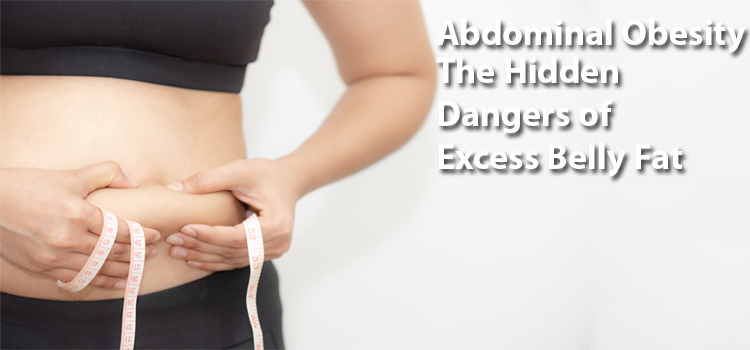Two types of fat accumulate on the human body. Subcutaneous fat accumulates noticeably just below the skin around the abdomen. On the other hand, visceral fat usually isn’t as visible. It is usually found around vital organs much deeper in the abdomen. Neither is a desirable condition under most circumstances. But visceral fat is usually the more dangerous form of abdominal obesity.
How is Visceral Fat Dangerous?
Visceral abdominal obesity fat accumulates around vital organs like your intestines, pancreas, and liver. Since it is not visible to the naked eye, most people don’t pay attention to it. But there are many dangers of fat, particularly the visceral kind. It has been linked many times to a higher risk of heart disease. Women tend to have lesser visceral fat than men, but it can still be dangerous to both. If allowed to build up, it can lead to serious health issues. But more on that later.
How Does It Build Up?
Some of the visceral fat in your abdomen is the result of genetics. However, the majority of it may be the result of an unhealthy diet and a lack of exercise. But that does not mean you have to live with it. The benefits of running and regular exercise include reducing visceral fat levels in the body. But since you can’t see it, how do you know you are losing it or not? Magnetic resonance imaging or MRI can help you locate buildups of visceral fat. But there is also an easier method. Take a look at your waistline. Anything more than 40 inches in men and 35 inches in women could be dangerous. If so, you should look into exercises for weight loss.
Diseases Linked to Visceral Fat
There are serious health risks associated with buildups of visceral fat in the abdomen. It is particularly harmful to people who already have a body mass index over 30 kg/m2 (obesity). Men may be at higher risk for some diseases. On the other hand, excessive weight gain during pregnancy can also be dangerous for women.
Sleep apnea is one of the most common problems arising from visceral fat. This is because visceral fat can obstruct the diaphragm. This means the lungs can’t fully expand, causing discomfort while sleeping. The higher risk of coronary disease is much more dangerous. Visceral fat can cause the release of certain chemicals that cause the coronary arteries to inflame. There is also an increased risk of high blood pressure and Type-2 diabetes.
Getting Rid of Visceral Fat
There are many ways for people to quickly lose belly fat. But unlike subcutaneous fat, you can’t get rid of visceral fat by toning your abdominal obesity area. It is inside the body, and you don’t have to be overweight to have it. So should you opt for surgery? Not really. However, losing visceral fat can be challenging. The best non-surgical weight loss procedure is a careful diet and regular exercise. You can start by making a few changes to your life.
Replace fruit juices with protein shakes for building muscle. Eating fruits is not a problem. But juicing them removes all the healthy fibers. All that’s left is fruit sugars. And we all know where sugar ends up – the waistline.
Cut out processed foods from your diet. Even the vegan variety. Processed foods contain artificial sweeteners and trans fats. Eating a lot of processed food regularly can contribute to visceral fat. Try to eat natural foods instead.
Green vegetables are your best friend to lose those inches on your belly. Leafy greens should be a large portion of your diet. At least 50% of your food intake should consist of veggies like broccoli and beans. Stay away from corn and potatoes. They are usually loaded with carbs and are not healthy after a certain age. Fitness tips for men over 50 often warn against eating too many carbs.
Pack on some muscle. Regular strength training can help you burn excessive calories. Pair it with moderate cardio for 5 days a week to make sure you keep burning them off.
Conclusion
Controlling and even getting rid of visceral fat is not impossible. Regular exercise and strict diets can help you bring down your waistline along with visceral fat levels. However, don’t worry if it takes longer than expected. Sometimes, weight loss diets fail. But it is important to know that losing fat is a process. You need to make sure you get back on the wagon every time you fall off. Stay determined and keep your healthy destination in mind.




